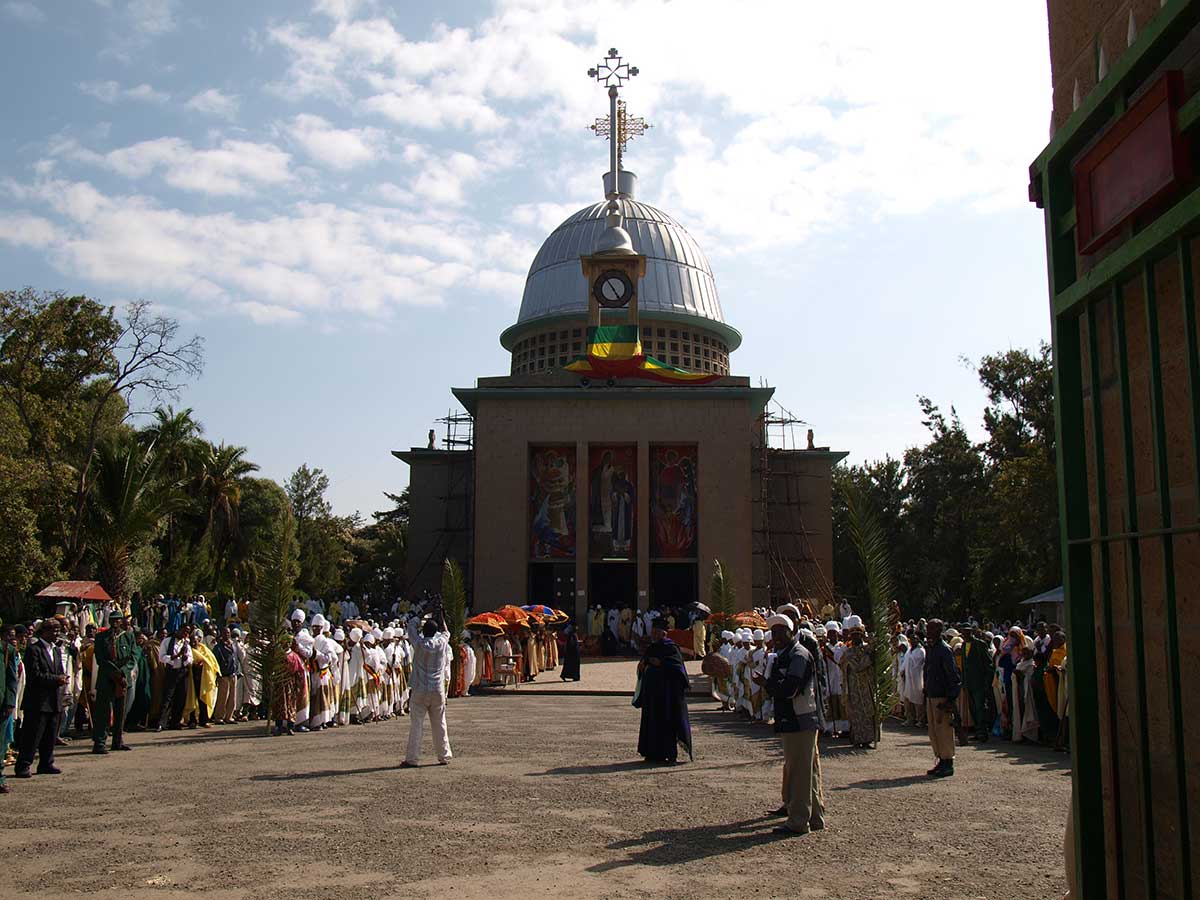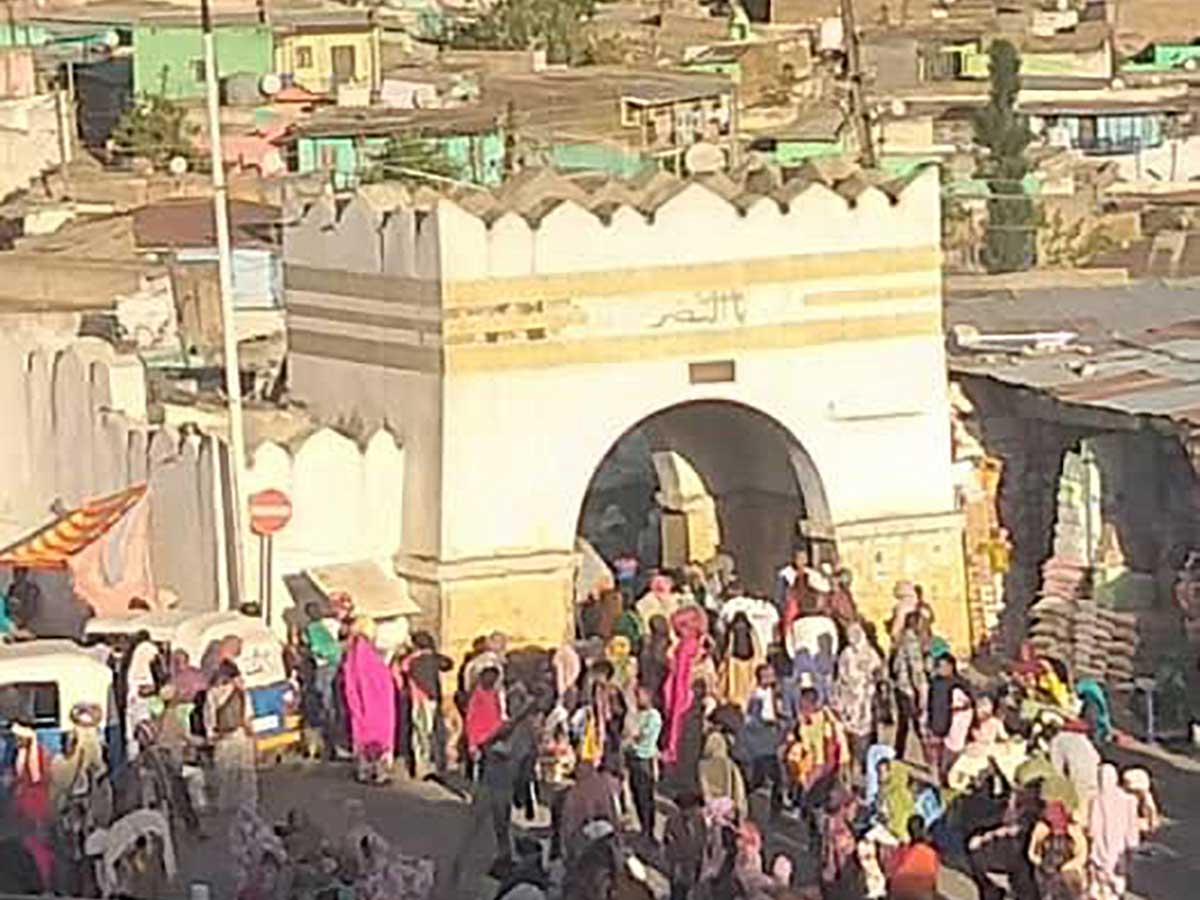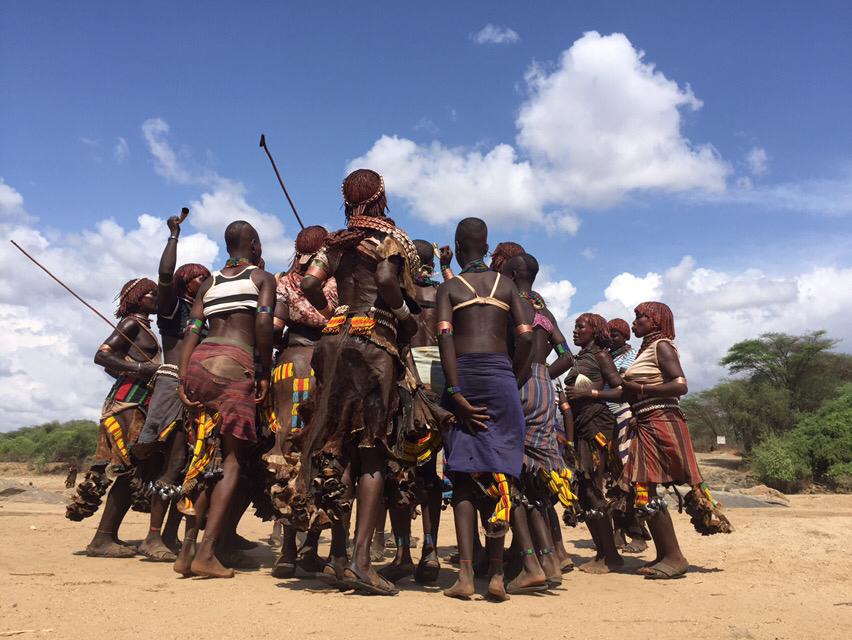About Ethiopia
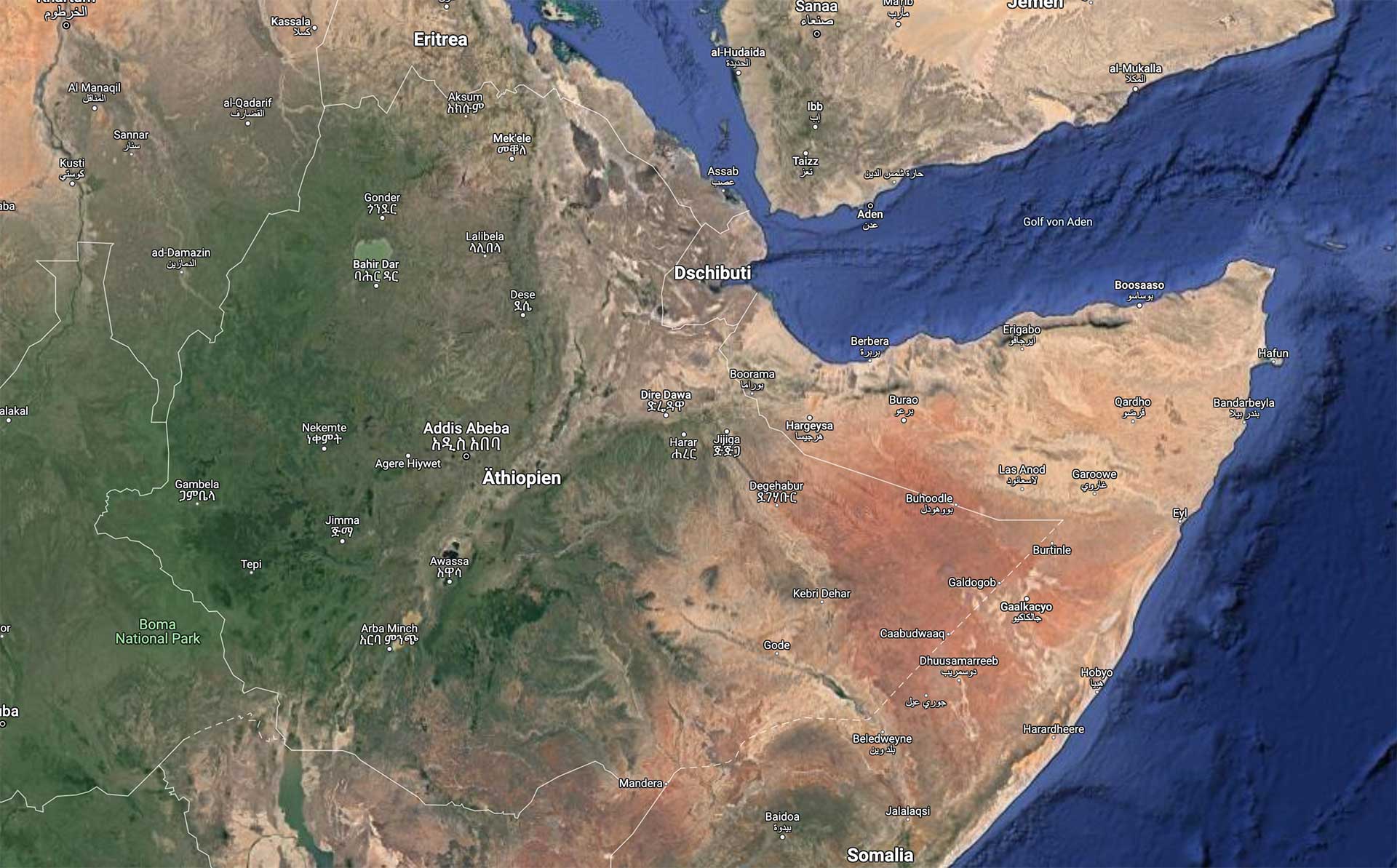

Ethiopia is located in the Horn of Africa and is bordered on the north and northeast by Eritrea, on the east by Djibouti and Somalia, on the south by Kenya, and on the west and southwest by Sudan. The country has a high central plateau that varies from 1,800 to 3,000 meters (6,000 ft.-10,000 ft.) above sea level, with some mountains reaching 4,620 meters (15,158 ft.). Elevation is generally highest just before the point of descent to the Great Rift Valley, which splits the plateau diagonally. A number of rivers cross the plateau--notably the Blue Nile flowing from Lake Tana. The plateau gradually slopes to the lowlands of the Sudan on the west and the Somali-inhabited plains to the southeast.
The climate is temperate on the plateau and hot in the lowlands. At Addis Ababa, which ranges from 2,200 to 2,600 meters (7,000 ft.-8,500 ft.), maximum temperature is 26o C (80o F) and minimum 4o C (40o F). The weather is usually sunny and dry with the short (belg) rains occurring February-April and the big (meher) rains beginning in mid-June and ending in mid-September.
Ethiopia enjoys a moderate climate despite its proximity to the Equator. Its high altitude ensures fairly consistent non-tropical temperatures around 25°C during the day to around 8 degrees at night. However, in the mountains, especially in January, it can get cold.
Temperatures in the lower lying areas such as Awash, Omo and the Mago park can be quite high. You are therefore advised to drink plenty of water and use high UV sun screen protection. Ethiopia has two main seasons - one is late January to early March when there are irregular short rainy spells. The other season is June until September with longer periods of heavier rain.
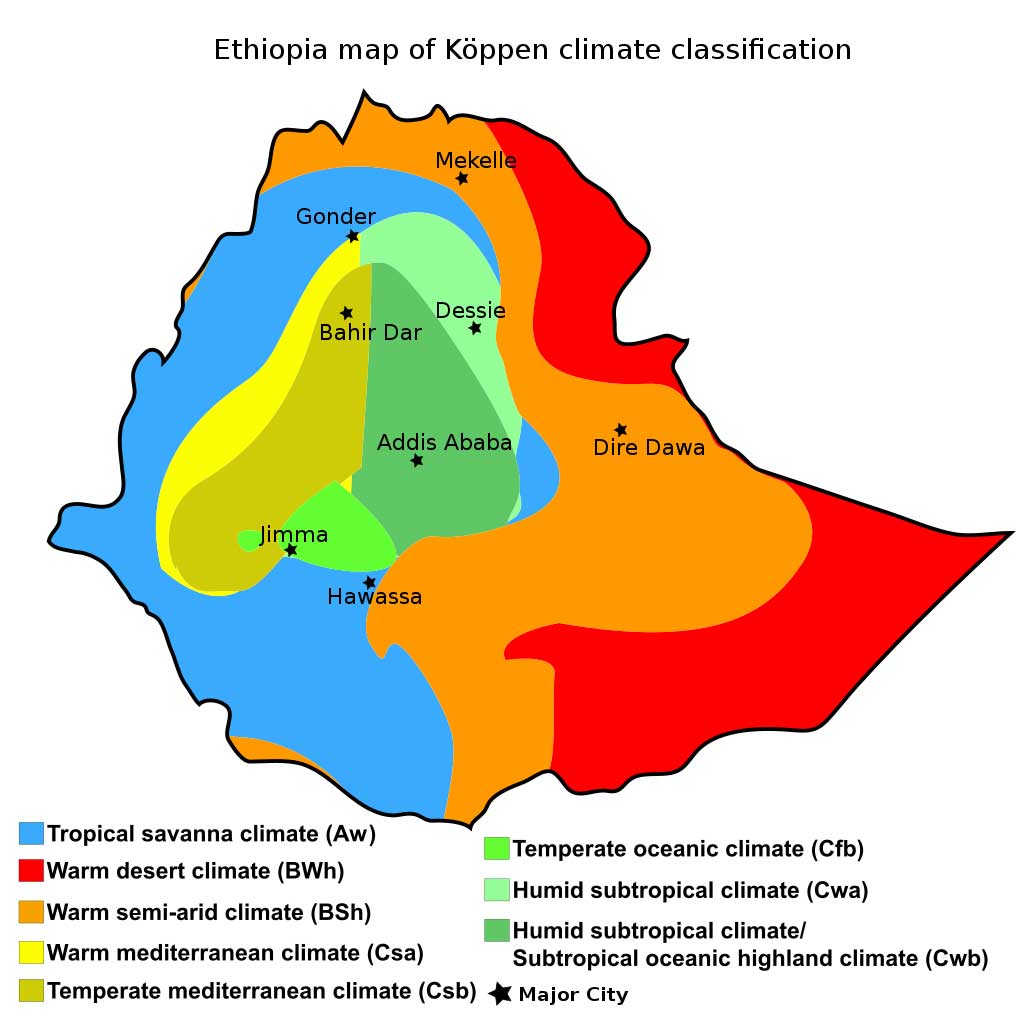
Hominid bones discovered in eastern Ethiopia dating back 4.4 million years make Ethiopia one of the earliest known locations of human ancestors. Ethiopia is the oldest independent country in Africa and one of the oldest in the world. Herodotus, the Greek historian of the fifth century B.C., describes ancient Ethiopia in his writings. The Old Testament of the Bible records the Queen of Sheba's visit to Jerusalem. According to legend, Menelik I, the son of King Solomon and the Queen of Sheba, founded the Ethiopian Empire. In the fourth century B.C .,Aksum embraced the Orthodox tradition of Christianity under the rule of King Ezana.
The king had been converted by Frumentius, a former Syrian captive who was made Bishop of Aksum. Missionaries from Egypt and Syria introduced Christianity in the fourth century A.D. Following the rise of Islam in the seventh century, Ethiopia was gradually cut off from European Christianity. The Portuguese established contact with Ethiopia in 1493, primarily to strengthen their influence over the Indian Ocean and to convert Ethiopia to Roman Catholicism.
There followed a century of conflict between pro- and anti-Catholic factions, resulting in the expulsion of all foreign missionaries in the 1630s. This period of bitter religious conflict contributed to hostility toward foreign Christians and Europeans, which persisted into the 20th century and was a factor in Ethiopia's isolation until the mid-19th century.
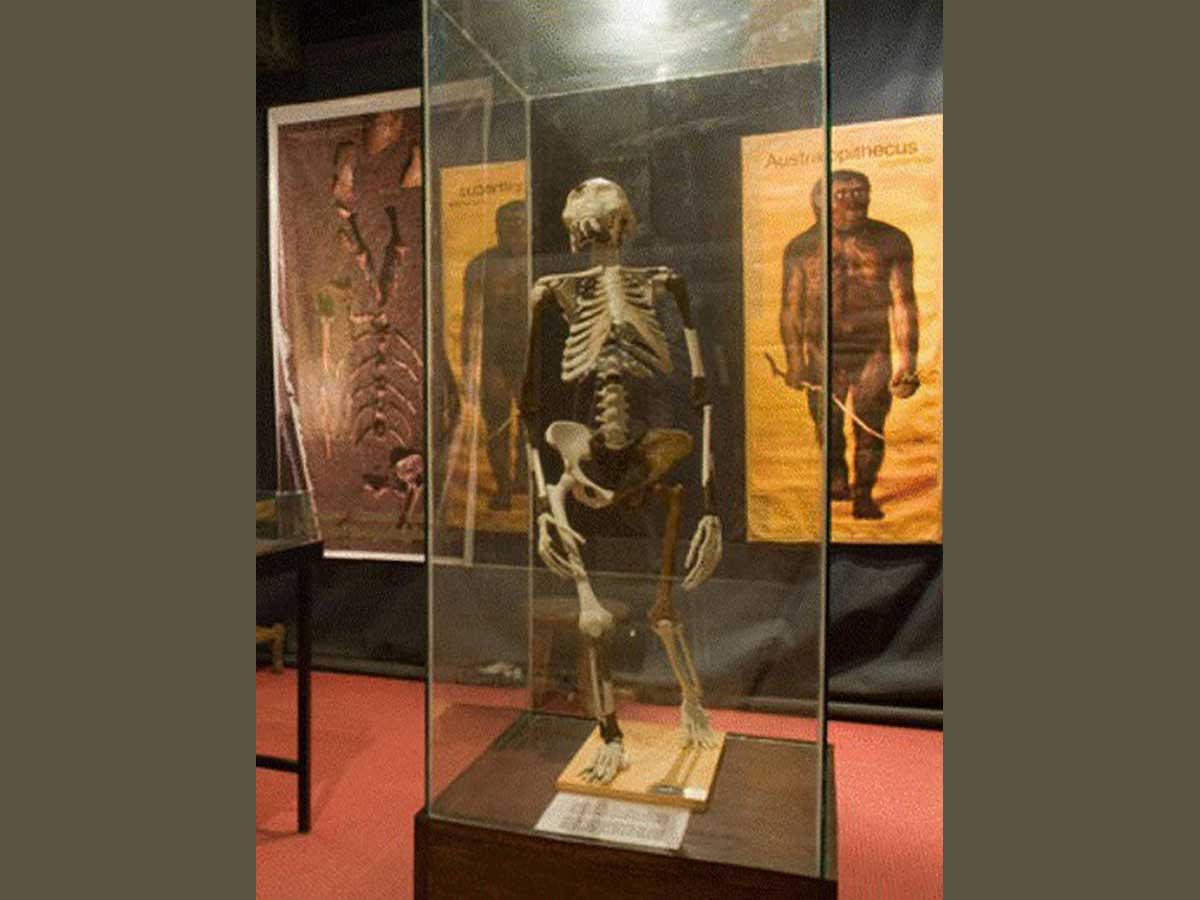
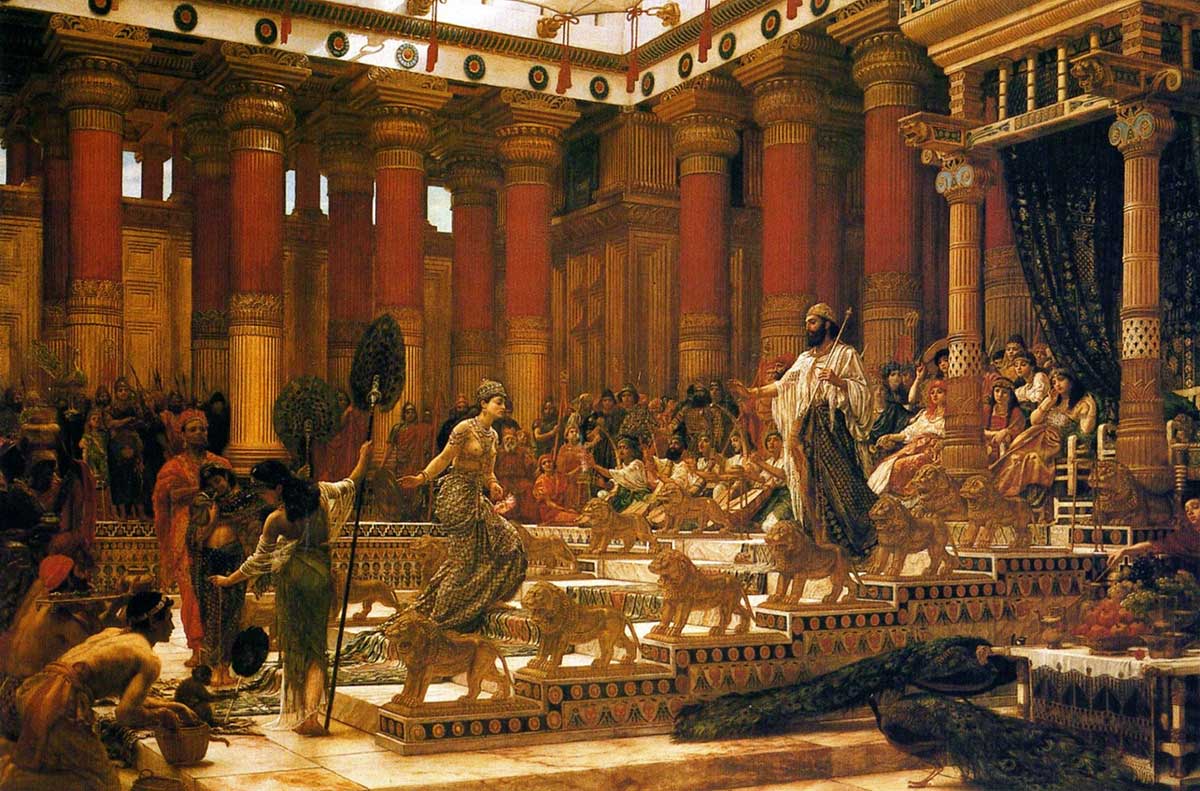 Queen of Saba and Salomon
Queen of Saba and Salomon Under the Emperors Theodore II (1855-68), Johannes IV (1872-89), and Menelik II (1889-1913), the kingdom was consolidated and began to emerge from its medieval isolation. When Menelik II died, his grandson, Lij Iyassu, succeeded to the throne but soon lost support because of his Muslim ties. The Christian nobility deposed him in 1916, and Menelik's daughter, Zewditu, was made empress. Her cousin, Ras Tafari Makonnen (1892-1975), was made regent and successor to the throne. In 1930, after the empress died, the regent, adopting the throne name Haile Selassie, was crowned emperor.
His reign was interrupted in 1936 when Italian Fascist forces invaded and occupied Ethiopia. The emperor was forced into exile in England. Five years later, British and Ethiopian forces defeated the Italians, and the emperor returned to the throne.
Following civil unrest, which began in February 1974, the aging Haile Selassie I was deposed on September 12, 1974 by a provisional administrative council of soldiers, known as the Derg ("committee"). The Derg seized power, installing a government that was socialist in name and military in style. It then summarily executed 59 members of the royal family and ministers and generals of the emperor's government; Emperor Haile Selassie I was strangled in the basement of his palace on August 22, 1975.
The Derg's collapse was hastened by droughts, famine, and insurrections, particularly in the northern regions of Tigray and Eritrea.
In 1989, the Tigrayan People's Liberation Front (TPLF) merged with other ethnically based opposition movements to form the Ethiopian Peoples' Revolutionary Democratic Front (EPRDF).
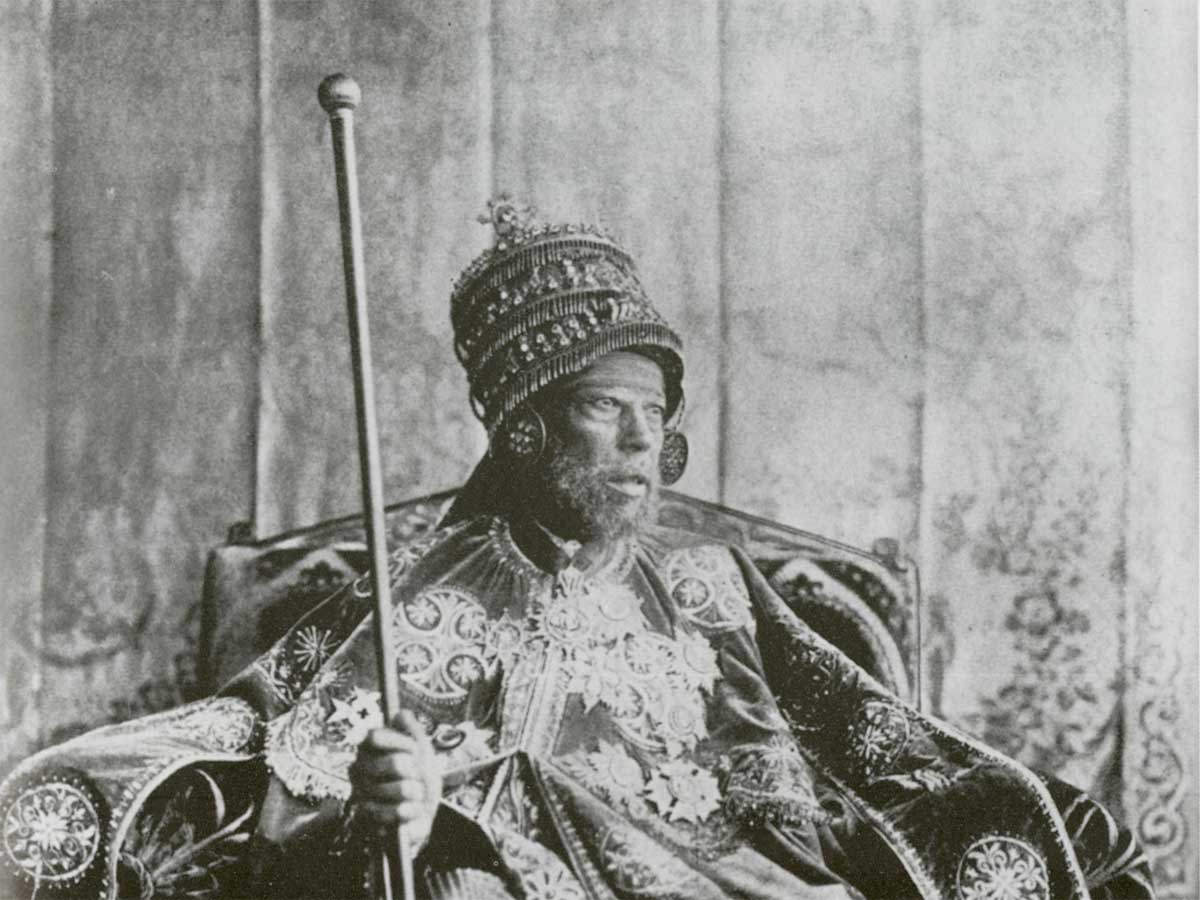
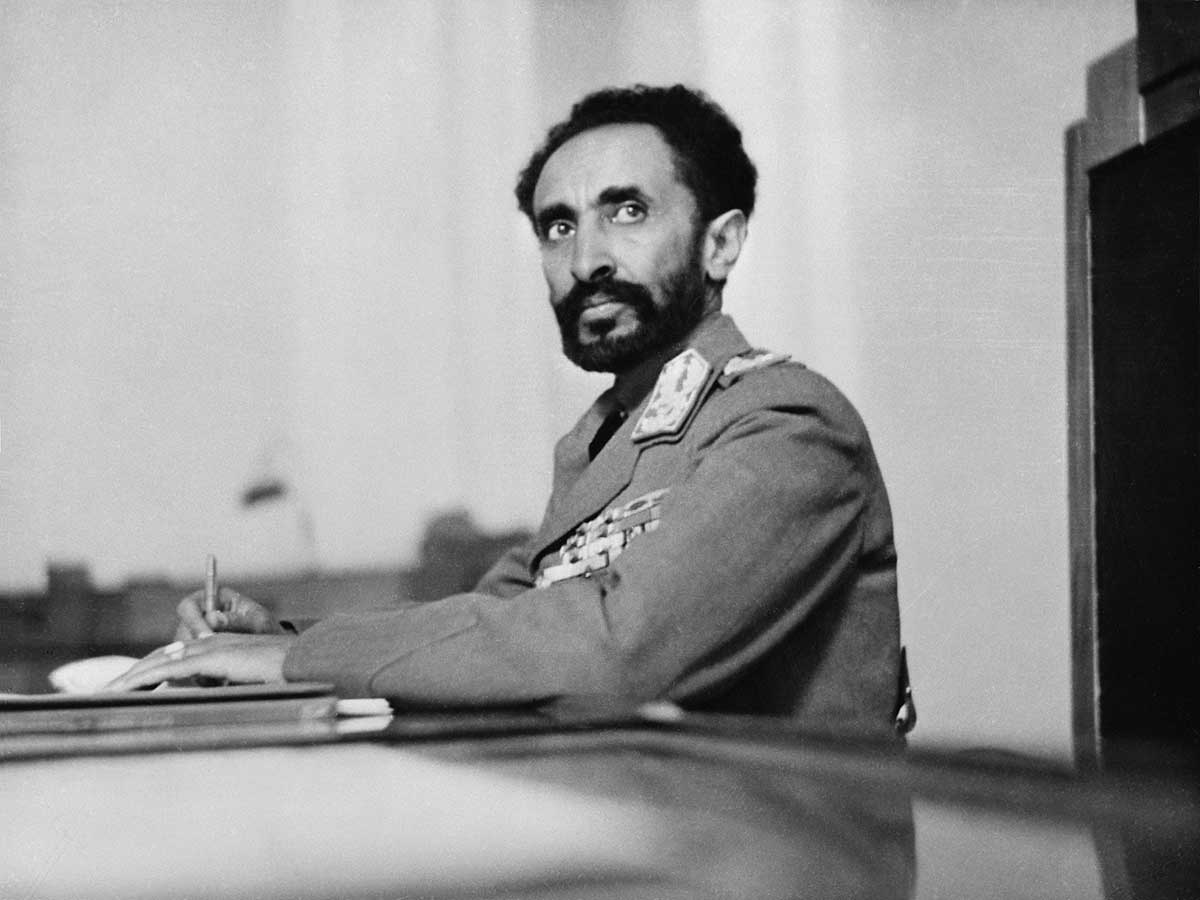 Emperor Haile Selassie
Emperor Haile Selassie
In May 1991, EPRDF forces advanced on Addis Ababa. Mengistu fled the country for asylum in Zimbabwe, where he still resides.
In July 1991, the EPRDF, the Oromo Liberation Front (OLF), and others established the Transitional Government of Ethiopia (TGE) comprised of an 87-member Council of Representatives and guided by a national charter that functioned as a transitional constitution. In June 1992 the OLF withdrew from the government; in March 1993, members of the Southern Ethiopia Peoples' Democratic Coalition left the government.
Also in May 1991, the Eritrean People's Liberation Front (EPLF), led by Isaias Afwerki, assumed control of Eritrea and established a provisional government. This provisional government independently administered Eritrea until April 23-25, 1993, when Eritreans voted overwhelmingly for independence in a UN-monitored free and fair referendum. Eritrea, with Ethiopia’s consent, was declared independent on April 27. The United States recognized its independence the next day.
In Ethiopia, President Meles Zenawi and members of the TGE pledged to oversee the formation of a multi-party democracy. The election for a 547-member constituent assembly was held in June 1994. The assembly adopted the constitution of the Federal Democratic Republic of Ethiopia in December 1994. The elections for Ethiopia's first popularly chosen national parliament and regional legislatures were held in May and June 1995. Most opposition parties chose to boycott these elections, ensuring a landslide victory for the EPRDF. International and non-governmental observers concluded that opposition parties would have been able to participate had they chosen to do so. The Government of the Federal Democratic Republic of Ethiopia was installed in August 1995.
In May 1998, Eritrean forces attacked part of the Ethiopia-Eritrea border region, seizing some Ethiopian-controlled territory. The strike spurred a two-year war between the neighboring states that cost over 70,000 lives. On June 18, 2000, Ethiopian and Eritrean leaders signed an Agreement on Cessation of Hostilities and o<br>n December 12, 2000, a peace agreement, known as the Algiers Agreement.
Opposition candidates won 12 seats in national parliamentary elections in 2000. The next national elections were held in May 2005, with the most free and fair national campaign period in the country’s history prior to the elections. Unfortunately, electoral irregularities and tense campaign rhetoric resulted in a protracted election complaints review process. Public protests turned violent in June 2005. The National Electoral Board released final results in September 2005, with the opposition taking over 170 of the 547 parliamentary seats and 137 of the 138 seats for the Addis Ababa municipal council. Opposition parties called for a boycott of parliament and civil disobedience to protest the election results based on claims of electoral fraud. In November 2005, Ethiopian security forces responded to public protests by arresting scores of opposition leaders, as well as journalists and human rights advocates, and detaining tens of thousands of civilians in rural detention camps for up to three months. In December 2005, the government charged 131 opposition, media, and civil society leaders with capital offenses including "outrages against the constitution." Key opposition leaders and almost all of the 131 were pardoned and released from prison 18 months later. As of March 2008, approximately 150 of the elected opposition members of parliament had taken their seats and currently remain in parliament. Ruling and opposition parties have engaged in little dialogue since the opposition leaders were freed. Government harassment made it very difficult for opposition candidates to compete in local elections in April 2008. As a result, the ruling party won more than 99% of the local seats throughout Ethiopia.
In June 2008, former CUD vice-chairman Birtukan Mideksa was elected the party chairman of the new Unity for Democracy and Justice (UDJ) party at its inaugural session in Addis Ababa. In October 2008 the Ethiopian Government arrested over 100 Oromo leaders, accusing some of being members of the outlawed Oromo Liberation Front (OLF). At the end of December 2008, after detaining Birtukan several times briefly during the month, the government re-arrested her, saying that she had violated the conditions of her pardon (she was one of the prominent opposition leaders pardoned by the government in the summer of 2007). Her original sentence of life imprisonment was reinstated.
In April 2009 the Ethiopian Government arrested 40 individuals, mostly Amhara military or ex-military members allegedly affiliated with Ginbot 7, an external opposition party, for their suspected involvement in a terrorist assassination plot of government leaders. This party was founded in May 2008 in the United States by Berhanu Nega, one of the opposition leaders in the 2005 elections, and advocates for change in the government "by any means." In August 2009, the Federal High Court found 13 of the defendants guilty in absentia and one not guilty in absentia. In November 2009, the court found another 27 guilty and is seeking the death penalty for all 40 defendants.
Presidential and parliamentary elections are scheduled to take place in May 2010. Many leading opposition politicians have voiced skepticism that the Ethiopian Government would permit free and fair elections. In September 2009, the Forum for Democratic Dialogue, a coalition of major opposition parties, walked out of interparty talks after complaining that the ruling EPRDF refused to hold bilateral Forum-EPRDF talks. Opposition party leaders reported an intensification of harassment, arbitrary arrest, and intimidation of their supporters, especially in rural areas.
Ethiopia is an independent Federal Democratic Republic with a President as head of state and a Prime Minister as the head of government. The constitution was established in 1994, following the over-throw of the Mengistu military dictatorship in 1991.
Ethiopia is a federal republic under the 1994 constitution. The executive branch includes a president, Council of State, and Council of Ministers. Executive power resides with the prime minister. There is a bicameral parliament; national legislative elections were held in 2005. The judicial branch comprises federal and regional courts.
Political parties include the Ethiopian People's Revolutionary Democratic Front (EPRDF), Unity for Democracy and Justice (UDJ), Oromo People's Congress (OPC), Arena Tigay for Democracy and Sovereignty, Oromo Federalist Democratic Movement (OFDM), Coalition for Unity and Democracy Party (CUDP), the United Ethiopian Democratic Forces (UEDF), All Ethiopia Unity Party (AEUP), and other small parties. Suffrage is universal at age 18.
The EPRDF-led government of Prime Minister Meles Zenawi has promoted a policy of ethnic federalism, devolving significant powers to regional, ethnically based authorities. Ethiopia has nine semi-autonomous administrative regions (Tigray, Afar, Amhara, Oromia, Somali, Benishangul-Gumuz, Southern Nations (SNNPS), Gambella and Harari) and two special city administrations (Addis Ababa and Dire Dawa), which have the power to raise their own revenues.
Addis Ababa, the capital, whose name means "New Flower", was foundet in 1886 and given its name by Empress Taytu, consort of Menelik II. The population of Addis Ababa is approximately 3 million.
Addis Ababa is situated at over 2,500 metres above sea level and adjusting to the altitude can take some visitors a little time, so don't be surprised if you find things tiring.
Depending on your level of fitness you might also experience a shortness of breath, headaches and possibly nausea until you are acclimatized.
At high altitude your breathing may become more rapid and shallow causing increased dehydration, so you should drink plenty of water and avoid alcohol.
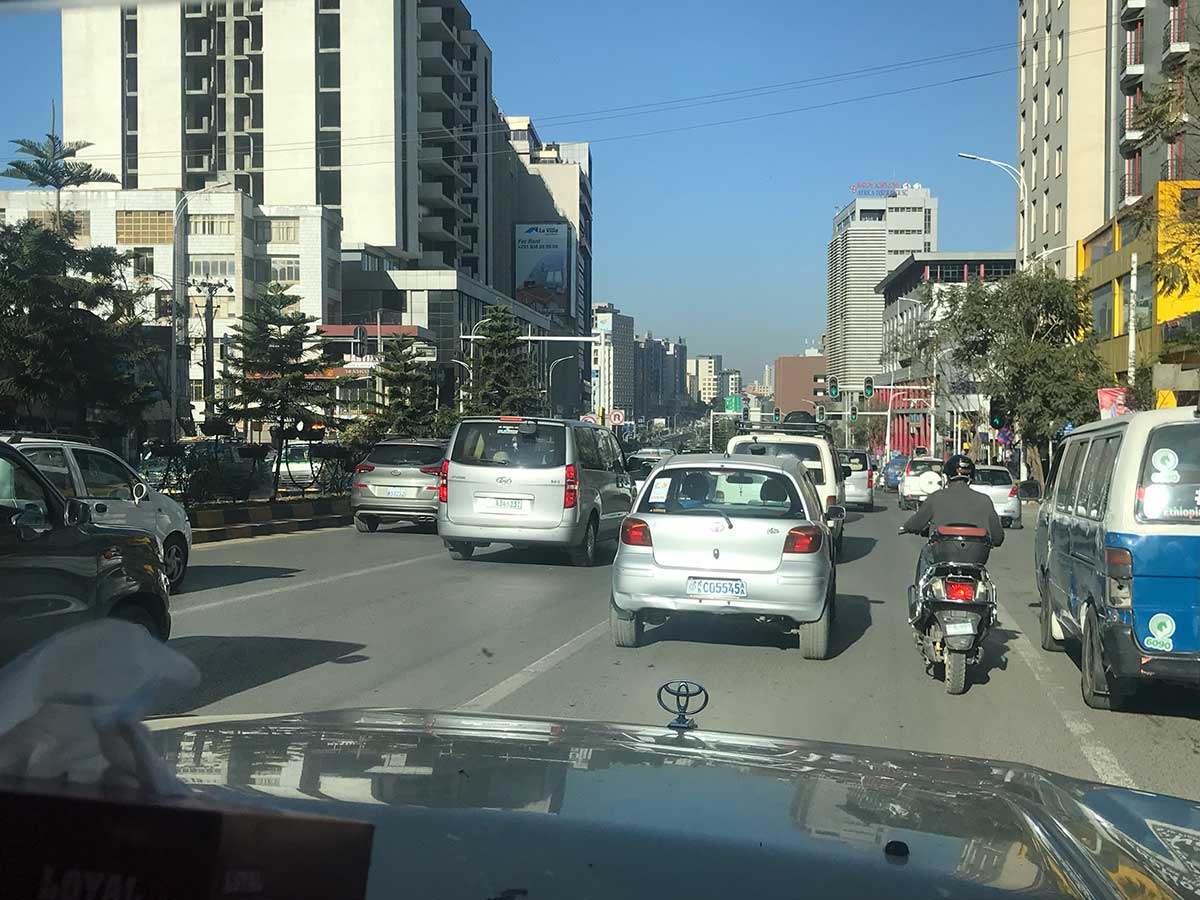
The current government has embarked on a cautious program of economic reform, including privatization of state enterprises and rationalization of government regulation. While the process is still ongoing, so far the reforms have attracted only meager foreign investment, and the government remains heavily involved in the economy.
The Ethiopian economy is based on agriculture, which contributes 45% to GDP and more than 80% of exports, and employs 85% of the population. The major agricultural export crop is coffee, providing approximately 35% of Ethiopia's foreign exchange earnings, down from 65% a decade ago because of the slump in coffee prices since the mid-1990s. Other traditional major agricultural exports are leather, hides and skins, pulses, oilseeds, and the traditional "khat," a leafy shrub that has psychotropic qualities when chewed. Sugar and gold production has also become important in recent years
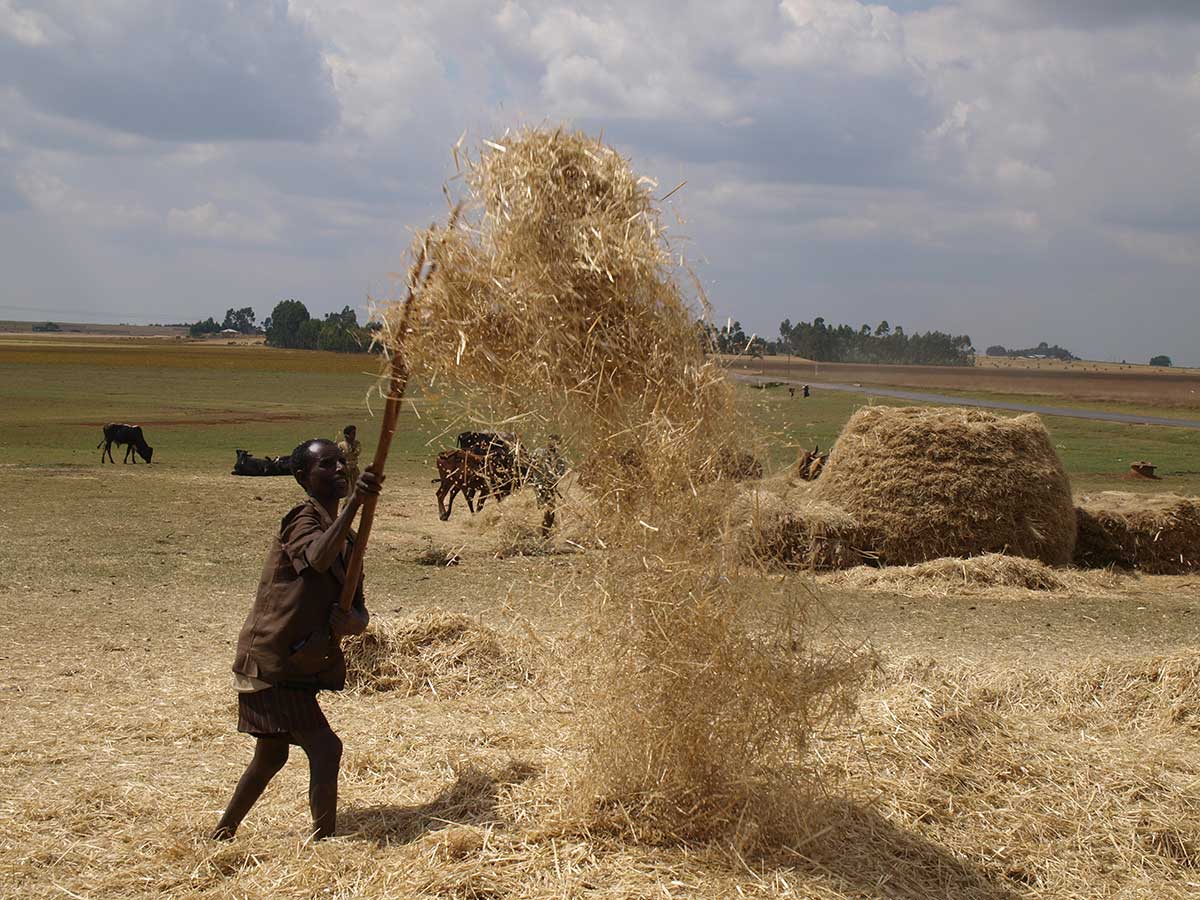
Ethiopia's agriculture is plagued by periodic drought, soil degradation caused by inappropriate agricultural practices and overgrazing, deforestation, high population density, undeveloped water resources, and poor transport infrastructure, making it difficult and expensive to get goods to market. Yet agriculture is the country's most promising resource. Potential exists for self-sufficiency in grains and for export development in livestock, flowers, grains, oilseeds, sugar, vegetables, and fruits.
Gold, marble, limestone, and small amounts of tantalum are mined in Ethiopia. Other resources with potential for commercial development include large potash deposits, natural gas, iron ore, and possibly oil and geothermal energy. Although Ethiopia has good hydroelectric resources, which power most of its manufacturing sector, it is totally dependent on imports for oil. A landlocked country, Ethiopia has relied on the port of Djibouti since the 1998-2000 border war with Eritrea. Ethiopia is connected with the port of Djibouti by road and rail for international trade. Of the 23,812 kilometers of all-weather roads in Ethiopia, 15% are asphalt. Mountainous terrain and the lack of good roads and sufficient vehicles make land transportation difficult and expensive. Ethiopian Airlines serves 38 domestic airfields and has 42 international destinations.
Dependent on a few vulnerable crops for its foreign exchange earnings and reliant on imported oil, Ethiopia is suffering a severe lack of foreign exchange while simultaneously battling high inflation. The largely subsistence economy is incapable of meeting the budget requirements for drought relief, an ambitious development plan, and indispensable imports such as oil. The gap has largely been covered through foreign assistance inflows.
Ethiopia's population is highly diverse. Most of its people speak a Semitic or Cushitic language. The Oromo, Amhara, and Tigreans make up more than three-fourths of the population, but there are more than 80 different ethnic groups with their own distinct languages within Ethiopia. Some of these have as few as 10,000 members. In general, most of the Christians live in the highlands, while Muslims and adherents of traditional African religions tend to inhabit lowland regions.
English is the most widely spoken foreign language and is taught in all secondary schools. Amharic is the official language and was the language of primary school instruction but has been replaced in many areas by local languages such as Oromifa and Tigrinya.
Ethiopia follows the Julian calendar, which comprises twelve months of thirty days each and a thirteenth month of five days (or six days in a leap year). The calendar is seven years and eight months behind the Western (Gregorian) calendar with Christmas being celebrated on January 7 and New Year on September 11, which can be extremely confusing to westerners.
Ethiopia follows the Julian calendar, which comprises twelve months of thirty days each and a thirteenth month of five days (or six days in a leap year). The calendar is seven years and eight months behind the Western (Gregorian) calendar with Christmas being celebrated on January 7 and New Year on September 11, which can be extremely confusing to westerners.
Amharic is the official language o Ethiopia, although English, Italian, French and Arabic are widely spoken. Ethiopians are proud of their rich tongue and frequently make the point that its vocabulary is as extensive as that of English, if not more so and that English should be used for foreign correspondence. But English is still widely spoken and remains a principal medium of instruction in secondary schools. In addition to Amharic, with the unique and elegant alphabet, there are around 80 local languages and about 200 dialects in the country.
Ethiopian enjoys complete freedom of religion. However, two religions are professed by the great majority: Christianity, as practiced by the Ethiopian Orthodox Tewahedo Church and Sunni Islam. The Ethiopian Orthodox Tewahedo church is attended mostly by Amhara and Tigre people, while Sunni Islam tends to be practiced primarily by Oromo, Somali and Afar people. There are also a significant number of people, the majority of whom belong to the Federal States of Southern Nations, Gambela and Beni-Shangul-Gumuz, who follow traditional animistic beliefs.
Other Christian churches are also present, although as minorities, including Catholic, Evangelical, and Adventist. Judaism has been represented for a long time by a group called Beta-Isarael, although today they have little representation because the majorities have emigrated to Israel.
